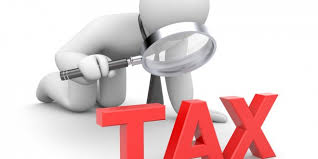Australian Taxation Office Rulings
NEW: Cents per kilometre rate:
As of 1 July 2018, the Commissioner of Taxation has determined that the rate for work-related car expenses to be 68 cents per kilometre. The new rate remains applicable to subsequent income years until such time as the Commissioner determines that it should be varied. This determination applies to eligible taxpayers who elect to use the cents per kilometre method when calculating income tax deductions for their work-related car expenses.
Under the cents per kilometre method:
• You can claim a maximum of 5,000 business kilometres per car.
• You do not need written evidence to show how many kilometres travelled, but you may be asked to show how you worked out your business kilometres.
• You cannot make a separate claim for depreciation of the car’s value
• This amount takes into account all your vehicle running expenses.
Fuel tax credit rates & simplified claiming methods:
• From 1 August 2018, fuel tax credit rates increased to 15.1c per litre in line with fuel excise indexation.
• Keeping accurate records of your business transactions can make it easier for you to claim correctly. If you claim less than $10,000 in fuel tax credits each year, you can use simplified methods to keep records and calculate your claims.
Simplified methods for claims less than $10,000 each year
• Use the rate that applies at the end of the BAS period
• When there is a change of rate during the business activity statement (BAS) period (for example, in February and August), you can calculate your fuel tax credit claim by using the rate that applies at the end of the period.
• There is no need to split your fuel purchases during the period and use two different rates. Simply total your litres for the period and use the rate that is current on the last day of the BAS period to work out your claim.
• To do this in the fuel tax credit calculator, enter your total fuel purchases in the final rate period.
• You can use this method for all BAS periods ending 31 March 2016 and onwards.
As fuel tax credit rates change regularly make sure you use the ATO Fuel Tax Credit calculator:
https://www.ato.gov.au/Calculators-andtools/Host/?anchor=FTCCalc&anchor=FTCCalc#FTCCalc/questions
Medicare Levy Surcharge (MLS) Exemptions
Did you know if you fit in one of the following categories, you are exempt from MLS for the whole of
2017–18.
• Your income for MLS purposes was $90,000 or less, and for the whole of 2017–18, you were single without a dependent child.
• You were single with a dependent child for the whole of the year and your income for MLS purposes was $180,000 or less (plus $1,500 for each dependent child after the first).
• You had a spouse (with or without dependent children) for the whole of the year, and you combined income for MLS purposes was $180,000 or less (plus $1,500 for each dependent child after the first). In working out whether your income exceeds an MLS income threshold, if your spouse died in 2017–18 and you did not have another spouse before the end of the year, you are treated as having had a spouse for the remainder of 2017–18.
Airport Lounge Memberships Ruling:
Did you know you are entitled to an income tax deduction for the annual fees of your airport lounge memberships?
Facts on this ruling:
• You, the taxpayer purchased an airport lounge membership. The airport lounge facilities are used primarily whilst you are on business travel. The primary function of Airport Lounge Club is to provide business facilities and prompt and efficient services relating to the travel of their members. Hospitality, such as food, drink and recreation, is merely incidental to the primary function of these clubs.
Paying super to temporary residents:
Did you know that temporary residents working in Australia are eligible for super guarantee (SG) as well?
• If you pay a worker $450 or more before tax in a calendar month, you have to pay SG on top of their wages – this includes temporary residents. When temporary residents leave Australia, they can claim the super you paid as a Departing Australia Superannuation Payment (DASP), as long as they meet all of the requirements.
• If you employ temporary residents, its recommended they start their DASP application using the ATO free online application system while they are in Australia. Its easier for them to get any supporting documents certified while they are here. When they leave Australia, they can go back to their saved DASP application and submit it.
Author: Elicia Rose




